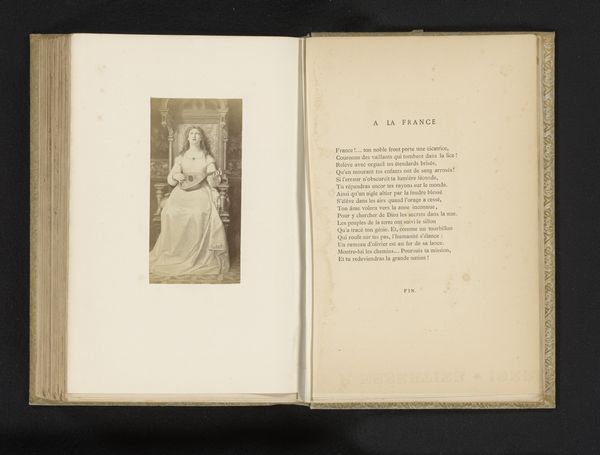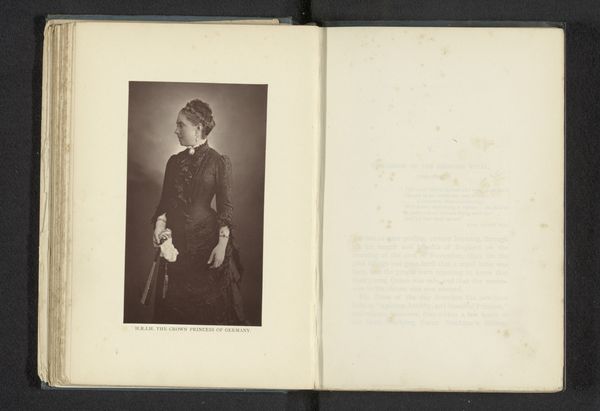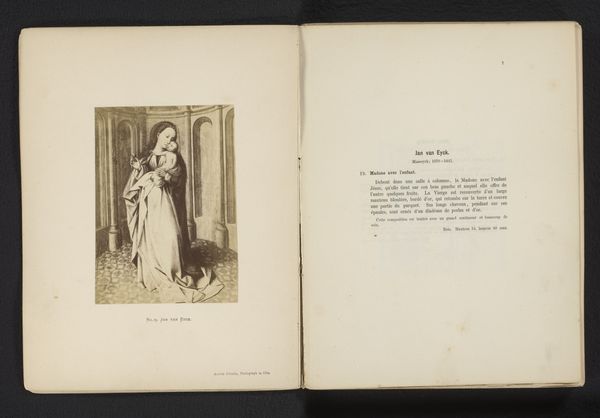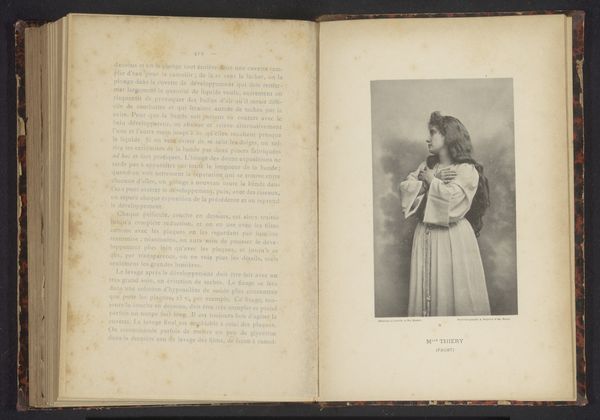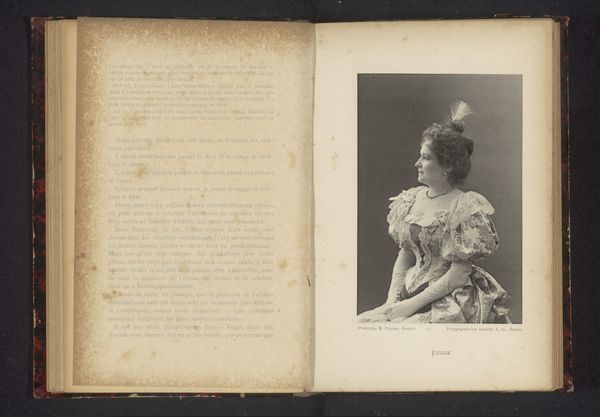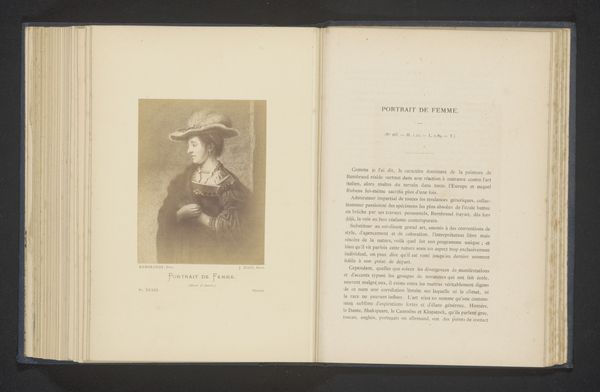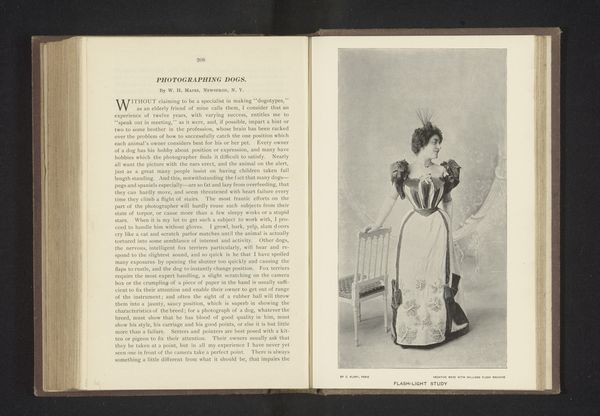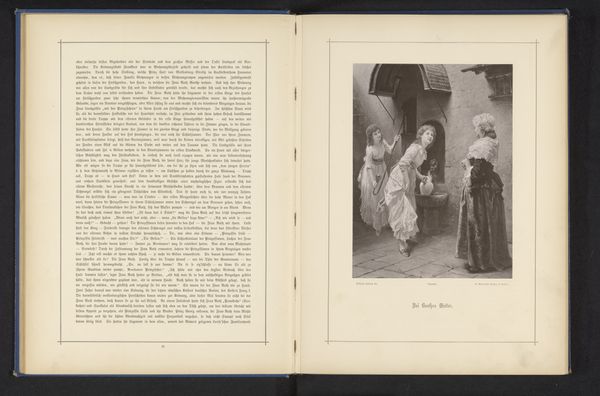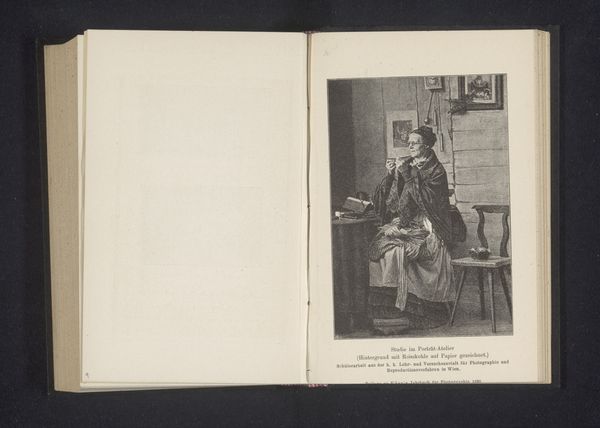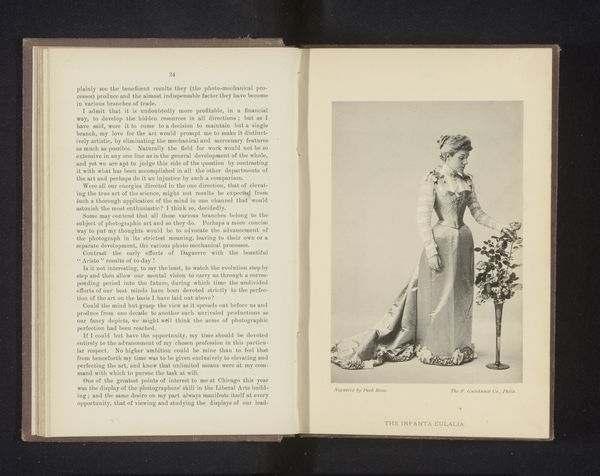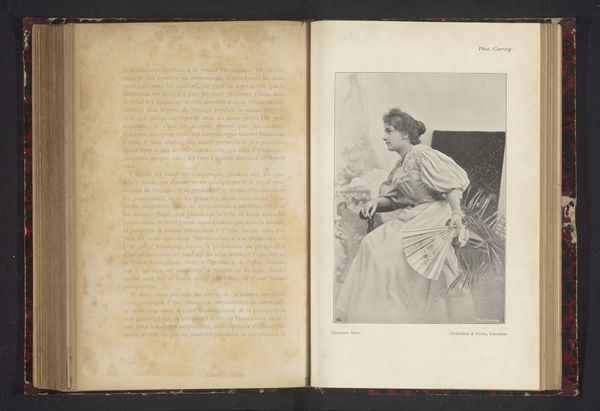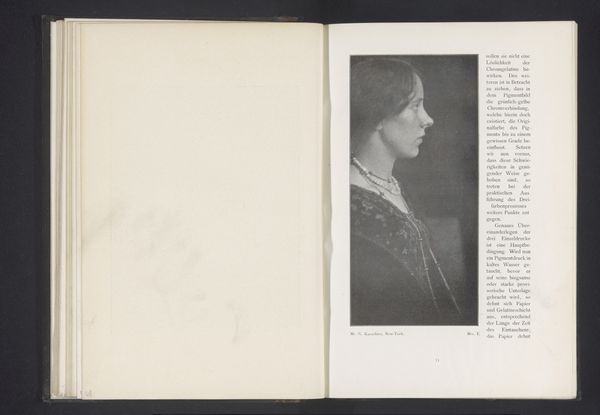
photography, albumen-print
#
portrait
#
aged paper
#
book binding
#
paper non-digital material
#
paperlike
#
photography
#
thick font
#
publication mockup
#
script guideline
#
letter paper
#
paper medium
#
albumen-print
#
realism
#
publication design
Dimensions: height 412 mm, width 290 mm, thickness 46 mm, width 580 mm
Copyright: Rijks Museum: Open Domain
Curator: Here we have "The Drawing Room Portrait Gallery of Eminent Personages vol. I", created in 1861 by Daniel John Pound, crafted with albumen print photography. It appears to be a photograph reproduced as a book plate. Editor: It's striking, isn't it? Somber. The texture of the paper and ink feels very deliberate and considered. Almost reverent, even. Curator: It is rather captivating. As a materialist, what interests me here is the industrial process that allowed photographs to be mass-produced and included in publications. Consider the labor involved, the precise chemistry, the printing presses—it marks a shift in how images circulated. Editor: Precisely! And this kind of image served a clear socio-political function. Portrait galleries were tools for shaping public opinion and solidifying the power of the portrayed—in this case, Queen Victoria herself, no less. Disseminating this image through mass media creates a controlled version of the monarchy. Curator: Right. The specific choice of albumen print, its tone and apparent archival intent, is significant. How does the medium itself reinforce power dynamics and Victorian values? Editor: Well, the album itself suggests curated memory, history being packaged and distributed, creating a tangible symbol of British imperial reach in drawing rooms across the country. This photo naturalizes a public image. It’s powerful, subtle propaganda. Curator: Propaganda, yes, or at least a deliberate cultivation of image through specific material means and methods of production. A craft itself that has political impact. Editor: The act of photographic reproduction and its incorporation into book form underscores the growing power of the press and its function within British society at that point in time. This helps define the Victorian Era itself. Curator: Absolutely, by analyzing its material presence—the paper, the ink, the printing techniques—we expose a vital dimension of its cultural resonance. Editor: Indeed, and through studying its historical context, how these portraits functioned within the social and political sphere, we unlock its impact and intended audience. A queen staring back from the pages. Curator: Seeing beyond the aesthetic, beyond simply the depiction of Victoria, but as a complex layering of materials, making, production and cultural purpose is incredibly insightful. Editor: I agree. Dissecting the art based on the historical context of image creation exposes layers of both intention and interpretation, changing one’s awareness.
Comments
No comments
Be the first to comment and join the conversation on the ultimate creative platform.
